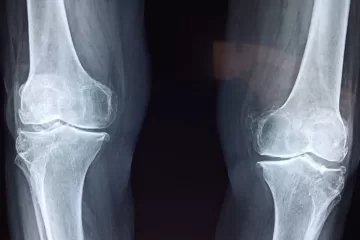Autism and Substance Addiction
Published by Tony Attwood on
Autism and Substance Abuse
We have seen an increasing number of autistic adolescents and adults with signs of substance addiction, usually alcohol but also illegal substances such as marijuana, amphetamines and opiates and the misuse of prescription medication such as benzodiazepines. Why are autistic individuals at risk of developing substance addiction? The simple explanation is to engage or escape reality and moderate intense emotions.
Engage reality
A fundamental characteristic of autism is difficulty socialising and subsequent social anxiety. Alcohol and marijuana can be used as a relaxant in social situations. The autistic person may find socialising easier when mildly intoxicated, with a sense of calmness and competence. An autistic adult explained Alcohol makes verbal communication easier (Brosnan & Adams, 2020). Unfortunately, the autistic person may depend on these substances to facilitate social engagement. An autistic adult explained: Alcohol is relaxing and provides happiness, and another autistic adult said that alcohol is A central solvent that my body chemistry has been missing. Alcohol is my cure for anxiety. Marijuana can have similar effects I smoke pot to make my anxiety and autism go away. It’s the only time I feel on the same wavelength as everyone else (Weir et al., 2021).
At the end of the working day, when a non-autistic person is exhausted and stressed, they may seek energy replenishment and relieve their tension via compassion, gestures of affection and conversation from a supportive person in their life. These interpersonal energy and emotion repair mechanisms may be less effective for an autistic person. Alcohol may be their preferred means of relaxation, and a daily routine of alcohol consumption becomes established.
Another characteristic of autism in adolescence is the tendency to be rejected by peers, engendering feelings of a lack of connection and not belonging to any specific group or culture. The acquisition and consumption of alcohol and drugs – easily available and the ‘currency’ of popularity and status – can provide membership in a sub-culture composed of others who also do not fit into conventional society. This group accepts those who are not popular. This sub-culture has clear rules and expectations regarding how to dress, talk and behave and has its own language and rituals. Friendships are formed, and the person is warmly welcomed, especially if he or she colludes with group members to acquire mood-altering substances, and the autistic group member avidly acquires knowledge on drugs from the Internet and becomes the respected expert for members of the group to consult on drug effects, dosage and interactions.
Many autistic adolescents and adults have extreme anxiety levels and describe trying to cope with racing thoughts, which are difficult to slow down, and ruminations, which are extremely difficult to block. Alcohol and drugs especially opiates and marijuana, can decelerate thoughts that are speeding out of control and block ruminations.
Some medications prescribed to reduce anxiety, such as benzodiazepines, can themselves become addictive after several months, with the person developing increased tolerance, impaired cognitive abilities, memory problems and mood swings. There can also be a dangerous misuse of other prescription medications and substances as the person self-medicates for anxiety, with the potential for hazardous drug interactions and the very real danger of accidental overdose. There is also the risk of conflict with the law and entry into the Criminal Justice System (Attwood, 2019).
Another contributory factor for an autistic person to maintain substance addiction is ADHD. We know that most autistic individuals also have signs of ADHD which can lead the autistic addict to be impulsive and not consider the long-term consequences of drugs on themselves and their family, and want almost instantaneous relief from intense and unbearable emotions, especially anxiety. Psychological emotion regulation strategies such as cognitive behaviour therapy, mindfulness and Yoga take time and effort.
There are high levels of unemployment associated with autism, leading to boredom, frustration and a sense of uselessness and under-achievement. Being part of the drug culture can provide purpose and structure for the day. There is a sense of achievement in seeking and finding drugs and an opportunity to leave one’s accommodation and meet people within the drug culture.
Escape reality
The use of mind-altering substances can provide a sense of protection, ‘anaesthetising’ the person from the effects of past trauma, such as being bullied or being the victim of emotional, physical, financial, or sexual abuse. Being in an emotionally safe ‘bubble’ creates a sense of emotional detachment. An autistic addict described self-medication as an escape from pain and genuine relief.
Alcohol, marijuana and illegal drugs seem to suppress or ‘switch off’ the frontal lobes, the thinking part of the brain. Autistic individuals need their frontal lobes to efficiently process social information and cognitively moderate emotions. When intoxicated, an autistic person may increase their autistic characteristics and have impaired decision-making, affecting their quality of life.
Research on autism and substance addiction
Rengit et al. (2016) confirmed our clinical experience that substance use for autistic individuals often alleviates anxiety and inclusion in a subculture. The association with autism, ADHD and substance abuse was confirmed by Butwicka et al. (2017). The same study found that substance use-related problems have been observed among 19%-30% of adult autistic clients in general clinical settings. A study of consecutive intake assessments at a substance use disorder clinic for young adults using a screening instrument for autism found that 20% had autistic characteristics (McKowen et al., 2021).
A systematic review of relevant research by Ressel et al. (2020) suggested that up to 36% of autistic individuals have co-occurring issues with substance abuse. An online survey of over 500 autistic adults found that the rate of heavy episodic drinking was 54%, with the rate in the non-autistic population being 17%. (Brosnan and Adams 2020). The strongest motivations were for social reasons and to enhance positive feelings, and 45% indicated they would not seek support for their substance use, with barriers to support including that it would occur in an unfamiliar chaotic environment and anticipating being misunderstood and judged by rehabilitation staff.
What to do when there are signs of addiction
The first stage is to recognise the addiction, which may affect mental and physical health and family dynamics and potentially lead to criminal activities to pay for the substances. The person who has the addiction may lack insight into the depth of the addiction, failing to recognise their inability to cope without mind-altering substances. If there is recognition of the addiction, there nevertheless may be resistance to reducing the level of substances or engagement in the drug culture, as the person may not be able to conceptualise life without their support in regulating emotions and disengaging from the drug culture. The idea of ‘kicking the habit’ can be frightening because it involves the unknown and trusting the effectiveness of alternative emotion management and social engagement strategies.
The second stage is to address the dysfunctional use of substances. This may mean providing alternative prescribed and carefully administered, and supervised medication. Throughout this process, access to a clinical psychologist is beneficial to provide advice, treatment and support for anxiety management and fear of being able to cope without illegal or misuse of legal substances, to encourage the development of social skills, new social networks and a resilient sense of self.
While the diagnosis of autism may provide a rationalisation for the addiction, it must also be considered when accessing support and therapy services. There will be those who enter the treatment services for addiction who have undiagnosed autism; it is important that there is routine screening for autism in all new participants in rehabilitation therapy and services for addiction, not only to determine the possible reasons for the addiction but also, importantly, to modify the therapy according to the characteristics of autism.
Rehabilitation services often rely on social living and group therapy and provide limited personal space and solitude opportunities. An autistic client will benefit from a single room wherever possible. They will also need guidance and support in group therapy’s social and disclosure requirements due to the characteristics of alexithymia, that is, converting thoughts and feelings into conversational speech. In a rehabilitation service, reading social and interpersonal dynamics can be difficult for an autistic person as well as recognising social and personal boundaries, knowing when to talk and not talk in a group, understanding how to resonate with the experiences and emotions of fellow addicts, and acknowledging the relevance of self-disclosure in a group setting. Staff need to know of these autistic characteristics and must make appropriate accommodations.
A study by Helverschou et al. (2019) found that typical interventions for treating addiction are often unsuitable for autistic adults. They recommended regular staff education on autism and accommodating the characteristics of autism in group sessions. The study also affirmed the perception of autistic participants in therapy as being drug experts and providing advice to staff and fellow residents on drug doses and combinations of drugs. The research also identified a tendency for autistic individuals to end their drug use their own way and not follow a recommended reduction plan.
Our clinical experience confirms that sometimes the autistic person can decide to end an addiction without a therapeutic plan and support. This takes great determination and relies on one of the characteristics of autism: once a decision has been made, the person is unwavering in seeking a resolution and the desired outcome.
A recent survey of over 100 drug and alcohol therapists’ perceptions of current service provision for autistic clients found that most therapists had received no autism-specific training, with alcohol misuse as the most common presenting issue, and most therapists reported that treatment outcomes were less favourable for autistic clients (Brosnan & Adams, 2022). They found an eclectic approach to be the most helpful and psychodynamic least helpful. Autistic clients tended to lack insight into the therapeutic process, were resistant to therapy suggestions, considered therapists as not understanding them or had inferior intellect. The authors recommend a range of therapeutic adaptations, such as using plain language, a more structured and concrete approach, shorter sessions and using hobbies and interests as part of therapy and more written and visual information.
The stress of group engagement, accepting treatment models, and staff not understanding autism can lead to premature voluntary discharge from residential rehabilitation services. The autistic person may become convinced that such services can never be effective. Rehabilitation services need to become more autism-friendly, and psychologists and psychiatrists need to develop an addiction treatment model specifically designed for the characteristics of autism and reasons for substance addiction in collaboration with autistic adults who are or were addicted to substances.
Once the addiction seemingly ends, there is still the risk of relapse. It is important for the autistic person and their family members to accept lapses before there is complete and enduring freedom from addiction. It will be important that the person does not interact with previous drug associates, the associated culture and potential triggers. There will need to be support for stress and emotion management, encouragement to increase the network of social contacts and enjoyable social experiences, and the introduction of a new lifestyle and schedule of daily activities. Recovering from addiction is a long road, but the journey and destination may be lifesaving.
Resources
Jackson (2016). Sex, drugs and Asperger’s syndrome London, Jessica Kingsley Publishers
Kunreuther & Palmer (2018). Drinking, drug use and addiction in the autism community London, Jessica Kingsley Publishers
Regan (2015) Shorts: Stories about alcohol, Asperger syndrome and God London, Jessica Kingsley Publishers
Tinsley & Hendrickx (2008). Asperger syndrome and alcohol: drinking to cope? London, Jessica Kingsley publishers
References
Attwood W. (2019). Asperger’s Syndrome and Jail: A survival guide London, Jessica Kingsley Publishers
Brosnan & Adams (2020). Autism in Adulthood
Brosnan & Adams, (2022) Autism in Adulthood
Butwicka et al. (2017). Journal of Autism and Developmental Disorders
Helverschou et al. (2019) Substance Abuse: Research and Treatment
McKowen et al (2021) The American Journal of Addictions
Rengit et al. (2016) Journal of Autism and Developmental Disorders
Ressel et al. (2020) Autism
Weir et al. 2021 Lancet Psychiatry


